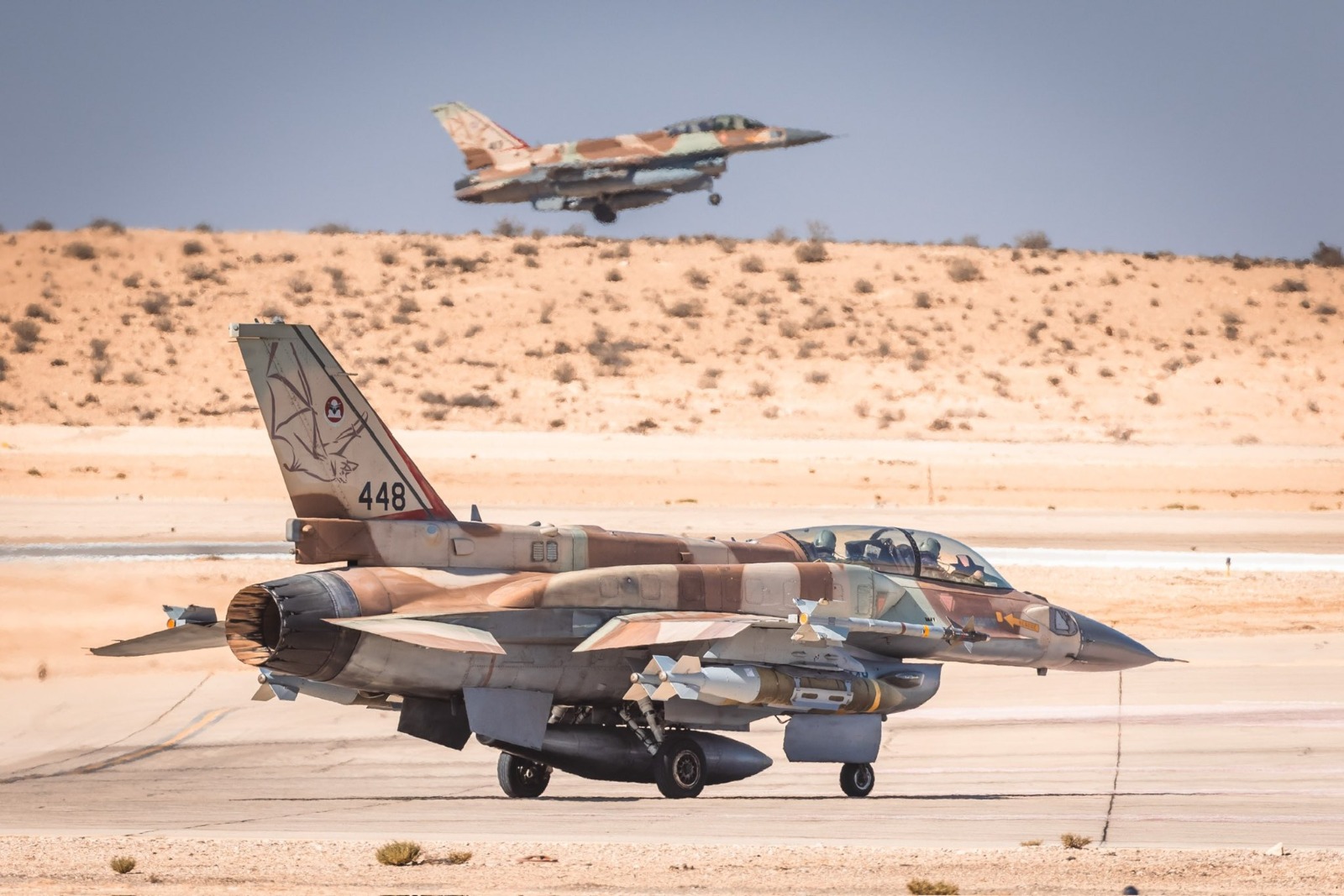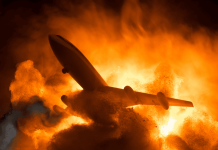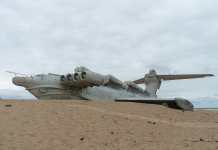In its latest attack on Hezbollah, Israel eliminated Ibrahim Aqil, the alleged mastermind behind the bombing of the barracks of US Marines and French forces deployed in Beirut as part of a multinational peace-keeping force more than forty years ago.
Following two days of pager explosions across Lebanon and Syria, Israeli fighter jets launched dozens of strikes across Southern Lebanon on September 19, allegedly in defiance of US warnings against escalation.
Matters came to a head when the F-35 fighters of the Israel Air Force (IAF) launched a ‘targeted strike’ in Beirut on September 20 in a bid to eliminate Hezbollah commander Ibrahim Aqil, along with other operatives of the militant group. The IAF warplanes reportedly fired four missiles and struck two buildings where Hezbollah and an unidentified Palestinian group were allegedly holding a joint meeting.
“The Hezbollah commanders we eliminated today had been planning their ‘October 7th’ on the Northern border for years,” Israeli army chief General Herzi Halevi was referring to the Hamas’ attack on October 7, 2023. “We reached them, and we will reach anyone who threatens the security of Israel’s citizens,” Halevi said.
Israel says that Hamas killed over 1200 Israelis in its attack on Israel in October 2023, which was one of the worst terror attacks the world has ever seen.
Hezbollah’s military chain of command has been almost completely dismantled after a dozen significant terrorists including Ibrahim Aqil were eliminated yesterday.
We will continue operating against any terrorist organization that poses a threat to our civilians on all fronts. pic.twitter.com/F2Ewyx4WdL
— Israel Defense Forces (@IDF) September 21, 2024
Following the latest attack, videos captured by witnesses showed piles of grey rubble where a single structure once stood as Lebanese Civil Defense personnel excavated the area in search of survivors. Lebanon confirmed that Israel had assassinated Ibrahim Aqil.
The incident also left at least 14 persons dead and 66 injured, according to Lebanon’s Ministry of Public Health. The toll is expected to be higher.
Military observers on social media pointed out that Israel had laid the ground for these strikes with its ‘pager explosion’ attack, which was meant to destabilize Hezbollah. Israel, on its part, has neither confirmed nor denied its involvement in the pager attack that has been labeled as an act of terrorism by some and a heroic mission by others.

Israel and Iran-backed Hezbollah group have regularly exchanged fire since the beginning of the Israel-Hamas hostiles in October 2023. However, tensions peaked when the IDF eliminated a high-ranking Hezbollah commander, Fuad Shukr, in July this year, with the militant group vowing a massive retaliation.
Against that backdrop, the killing of another important Hezbollah Commander has sparked fears of a massive escalation and an all-out confrontation. US White House Spokesperson Karine Jean-Pierre had earlier stated in a briefing that the US was “afraid and concerned about potential escalation.”
Hezbollah leader Hassan Nasrallah had earlier warned in a speech that the pager attack was tantamount to the “declaration of war” while pledging an adequate response. With the second-in-command Ibrahim Aqil now eliminated, the situation remains extremely volatile.
40 years ago to the day, Ibrahim Aqil helped direct a Hezbollah suicide bombing that targeted the American embassy in Beirut.
Today, Israel eliminated him with a surgical airstrike in Beirut.
Justice is served.
🇮🇱🇺🇸 pic.twitter.com/pyS4XrS5Kl
— Israel War Room (@IsraelWarRoom) September 20, 2024
Nonetheless, Israel has neutralized a Hezbollah leader who had a bounty of $7 million on his head from the US Department of State. His killing not only represents a tactical victory for Israel but is also portrayed by Western media as an act of vengeance against a militant who was accused of killing several US and French troops in Beirut over 40 years ago.
Aqil Ibrahim Was Wanted By The United States
Ibrahim Aqil was a senior leader in Hezbollah’s elite Radwan Force. Like the majority of prominent Hezbollah military figures, Aquil remained anonymous and had not made any public appearances or pronouncements until his assassination on September 20, 2024.
Aqil was a key player in one of the militant groups during the 1980s when many factions fought for control of Lebanon during a period of civil war in the country.
The Israeli military claims that Aqil, who joined Hezbollah in the 1980s, was in charge of the organization’s activities outside of Lebanon. He was accused of planning a bombing that killed scores of US and French troops who were stationed in Beirut for a peacekeeping mission–a charge that was denied by Hezbollah.
We can now confirm that Ibrahim Aqil was eliminated together with other senior terrorists in Hezbollah’s Radwan Forces pic.twitter.com/6FyXQOzAex
— Israel ישראל (@Israel) September 20, 2024
Palestinians who were driven out or fled Israel in 1948 became refugees in adjacent nations, such as Lebanon. The Palestine Liberation Organization (PLO) was established in 1964 to stand up to Israeli rule and represent the Palestinian people. Over 20,000 PLO fighters were in Lebanon by the middle of the 1970s.
Their presence in Lebanon sparked hostilities between Palestinian and Lebanese Muslims and Christians. Some in Lebanon aspired to fight for the Palestinian cause, while others supported peace with Israel.
To eliminate PLO forces, Israel initiated Operation Peace for Galilee in 1982. Soon after, it invaded Lebanon and took control of Beirut.
In the wake of the Israeli invasion and a fiery civil war, the Lebanese government requested assistance from Western nations. A multinational peacekeeping force was established in August 1982 by the governments of the United States, France, Italy, and the United Kingdom to bring about peace and put an end to hostilities between Israelis, Palestinians, and Lebanese.

The Multinational Force (MNF) comprising 400 French soldiers, 800 Italian soldiers, and 800 US Marines was sent to Lebanon. The MNF was tasked with overseeing the withdrawal of Palestine Liberation Organization (PLO) guerrillas. While several Lebanese groups welcomed the MNF, many Lebanese opposed the foreign peacekeepers and considered them a Western colonial intrusion into the Muslim-majority country.
Additionally, it was believed that the United States gave Israel overt military support in the form of weapons and supplies, as it tacitly approved of the Israeli assault. The US’s support for Israel’s invasion of Lebanon sparked widespread outrage. There was discontent in the country as President Bachir Gemayel was allegedly linked with Israel and the Lebanese Armed Forces (LAF), which was seen as a destabilizing force in the region.
The Islamic militias in Lebanon were infuriated with Western intervention in the country’s affairs and its covert support for Israeli designs.
In response, a spate of attacks was launched on the Western forces based in the country. In April 1983, for example, a suicide bombing was carried out at the US embassy in Beirut. The victims of the bombing were US troops, US marines, as well as CIA officials.
The attack was initially blamed on the Islamic Jihad Organization, which the US alleged, was a cell belonging to the Hezbollah.

Amid simmering tensions in Lebanon between foreign peacekeeping forces and Hezbollah, a massive bombing attack was launched on the barracks housing US Marines and French troops.
On October 23, 1983, 241 US servicemen were killed when a suicide bomber truck struck American military barracks at Beirut International Airport.
In the wee hours of the fateful day, a 19-ton Mercedes-Benz stake-bed truck made its way to the airport in Beirut. The 1st Battalion 8th Marines (BLT) stationed there, at the time, expecting a water truck but the truck that approached them was a hijacked truck carrying explosives. The truck’s driver turned onto an access road that went inside the compound. He entered the parking area, circled it, and then sped up to smash through a concertina wire barrier that separated the parking lot from the building.
The truck then drove between two sentry posts, through an open vehicle gate in the chain-link fence surrounding the building, and into the lobby of the structure housing the 1st Battalion 8th Marines (BLT) barracks. It then crashed through a guard shack located in front of the building.

The devastating attack claimed the lives of a majority of US Marines, making it the deadliest assault on the Marine Corps since the Battle of Iwo Jima in World War II. The investigations revealed that the explosives used in the bombings were up to 12,000 pounds or 5,400 kilograms of TNT.
Just a few minutes later, six kilometers (3.7 miles) away, in the Ramlet al Baida neighborhood of West Beirut, a similar attack took place on the barracks of the French 3rd Company of the 1st Parachute Chasseur Regiment. The attack killed fifty-eight French paratroopers.
Overal, the attack killed 307 people: 241 U.S. and 58 French military personnel, six civilians, and two attackers.
Like the embassy bombing, the US accused Hezbollah of launching the attack, a claim that has been refuted. The attack, as alleged by Washington, was masterminded by Ibrahim Aqil in collaboration with Iran, which was allegedly training Hezbollah operatives at the time. The US also accused Aqil of taking US and German captives in the 1980s.
There are several theories about Iranian and Hezbollah’s role in the bombing. Some believe it is not clear if Hezbollah was operational in 1982-1983, while the US maintains that Ibrahim Aqil and others were trained to attack the Western forces.
Nonetheless, with the latest Israeli attack, one of the “most wanted terrorists” by the United States is now dead. The fears of a major escalation, however, loom large.
- Contact the author at sakshi.tiwari9555(at)gmail.com
- Follow EurAsian Times on Google News




